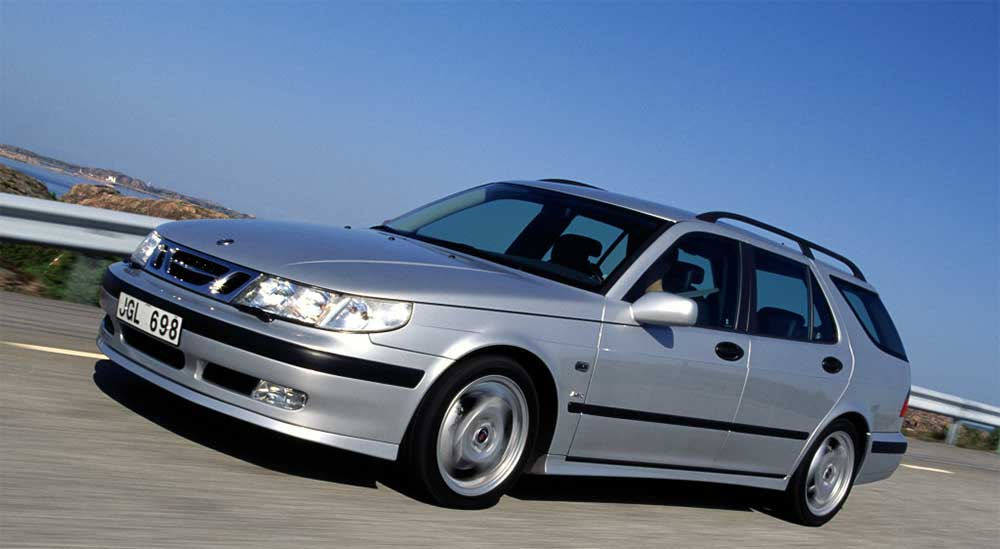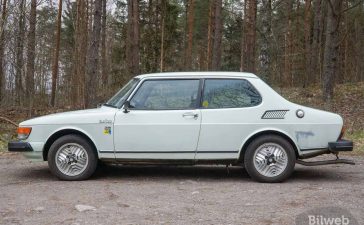The company Saab is nurturing a distinctive image in relation to other competing car brands, and mostly had very special and innovative promotional campaigns that showed potential customers all the advantages of Swedish cars.
Let’s just remember the marathon races against themselves in the form of the Talladega “The Long Run” project, in which Saab proved the exceptional potential and performance of its cars in a 24-hour, multi-day test. One of the series of such promotional campaigns was in 2000 when the Saab company promoted the then new Saab 9-5 Aero Wagon (Sportcombi).
In 2000, Saab organized a truly sky-high presentation of the car. Most likely, it was the first event of this type carried out at such an altitude. The Saab 9-5 Aero Wagon was shown to journalists 2,650 meters above sea level, near the New Mexico ski resort in the Rocky Mountains in the USA.
On a closed runway, the acceleration of the new Saab was compared with its most powerful premium competitors: the Volvo V70R and BMW 540iT. With professional drivers behind the wheel, the Saab 9-5 Aero Wagon took on the Volvo and BMW in races to 60 mph, and again to 130 mph.

For this special race, an airport runway near the Angel Fire ski resort in New Mexico, at an altitude of 8,600 feet, was deliberately chosen for Saab to prove that their four-cylinder 2.3-liter variable-pressure turbo engine works without any problems even with a thin air that is depleted of oxygen. Although the competitors were ahead of Saab in terms of specifications, BMW with even 50 hp more, and Volvo with a one cylinder more and 30 hp more, it was not enough for them to beat Saab in this race.
Tests showed that the Saab Trionic engine management system was able to handle the rarefied air without any problems, maintaining the full performance of the turbocharged engine. Other cars were left behind. Thanks to the Trionic 7 engine management system that controls direct ignition, fuel injection, turbo boost pressure and setting, all engine performance is improved. Electronic throttle control overcomes the inertia present in a large turbocharger and virtually eliminates turbo lag by manipulating the throttle position.
As it was an Aero model, the sporty spirit was expressed through an aerodynamic package, spoiler, rear section and 10-spoke 17-inch BBS wheels. The Aero Wagon also featured a sportier suspension, lower than the base 9-5 wagon as the chassis was lowered nearly half an inch and stiffened. Larger anti-roll bars with stiffer springs and stiffer dampers were added to reduce body roll and improve steering precision. At the time, the 9-5 Aero Wagon was about $7,000 more expensive than the base 9-5 wagon and $2,000 more than the 3.0-liter SE wagon.












Maybe more of these cars would have been sold if their were offered in more exciting colors. Love the car; can’t stand the boring silver color.
TO Rafał Lachmirowicz>
before my current silver, I only drove red. So, my brain is finding a bit hard to adjust. But color does turn heads. Agree with you point re performance out the gate.
I had one the estate
Still enjoy my 9-5 Aero Wagon 2003 with Hirsch performance!
At German Autobahns it consumes only 7,4 liters to 100km.
The car has now 255’000 km on the clock! Still going strong!
There its no better car for long distance driving!
But I must be honest, my prefered cars are the 96V4 of 1979, have it from new and my Sonett 1968 V4.
Just to let you know, I am from the elder gereation, now 76!